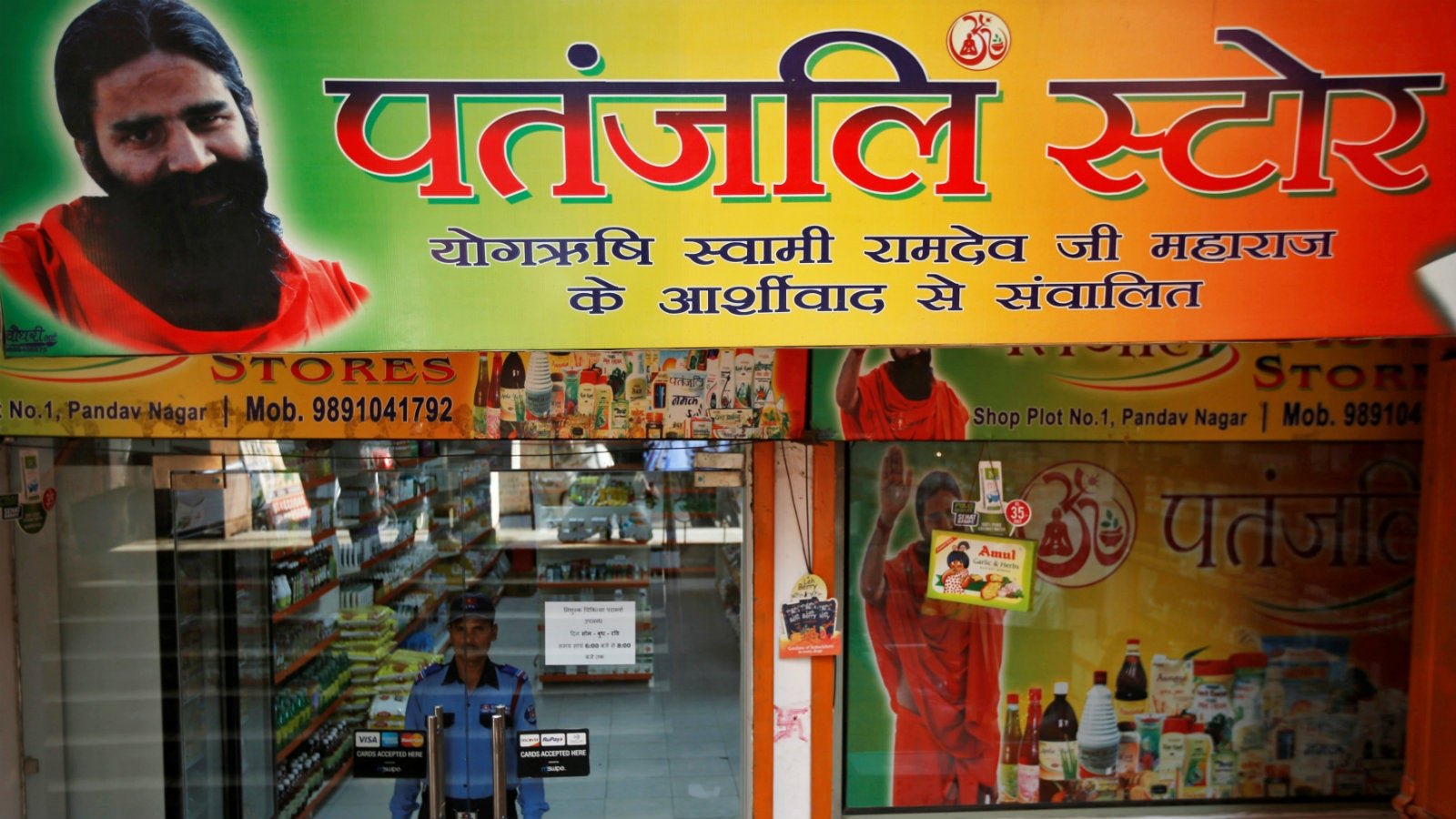Ramdev’s Patanjali must move past pricing to win India’s consumer goods war
Yoga guru Ramdev’s Patanjali Ayurved is back to playing the “price” card. This time in dairy products.


Yoga guru Ramdev’s Patanjali Ayurved is back to playing the “price” card. This time in dairy products.
On May 27, days after sector heavyweights Amul and Mother Dairy raised prices of their milk pouches, Patanjali announced the launch of the toned variant of its cow milk. “Keeping in view the increasing demand for toned milk in the country, Patanjali is now selling milk at Rs40 ($0.58) per litre, which is Rs4 cheaper than what other companies are selling,” Ramdev said during the launch in the northern Indian city of Haridwar.
Given the size of India’s dairy market—projected to be $140 billion by 2020—Patanjali is adding heft to its portfolio in a lucrative segment. However, can cheaper products alone help it?
The strategy and challenges
The Indian dairy market is fragmented, thanks to the difficulties of building an extensive pan-India procurement and distribution network. Competition is weak, with regional players like Parag leading in some regions, and Amul, Mother Dairy, and Kwality dominating in others.
For its part, Patanjali is betting on its processing plants in Maharashtra, Rajasthan and Uttar Pradesh, besides its network of over 56,000 retailers across the country, to expand.
The consumer major also hopes lower prices will fuel growth.
“Milk is a high top line (revenue) but low-margin (profit) business. Here, Patanjali is hopeful of making an impact by acquiring a critical mass of buyers through discounted pricing,” said Abneesh Roy, senior vice-president at Edelweiss Financial Services. “With lower pricing, Patanjali fancies its chances of getting a larger share of the market particularly in pouched milk, which is the only category that supports pricing power.”
Yet, given the strong brand equity and trust that players like Mother Dairy and Amul enjoy, it’s a tall order for a recent entrant like Patanjali.
“To attract buyers, a new player has to first highlight its strong brand proposition to consumers vis-à-vis other brands. (Only) post that, it should look to leverage pricing,” said S Swaminathan, co-founder of Hansa Cequity, a data-driven customer marketing solutions company.
For now, Patanjali’s only brand proposition is the “indigenous” tag. Ramdev has so far been trying to score over rivals by pitching its cow milk, launched in 2018, as the purest, since it is sourced only from Indian breeds of cow.
Partial success
In the past, Patanjali’s discounted pricing strategy has met with partial success in winning consumers.
Immediately after its 2009 consumer goods foray, it managed to create strong traction for its select offerings like honey, toothpaste, and oil with lower prices. Market observers estimate that Patanjali’s products are priced between 3% and 10% lower than those of rivals.
However, a price-led approach has its drawbacks. “Price can never be a substantial advantage because then anybody can lower prices and displace you,” said Ashita Aggarwal, a professor of marketing at Mumbai’s SP Jain Institute of Management and Research. Moreover, when products are priced way lower than competition, it impacts brand equity. A large section of buyers may start associating cheap products with lower quality, added Aggarwal.
In Patanjali’s case, it appears the pull of lower prices has stopped working by now. Its product quality has also been brought to question. This has begun reflecting on the company’s earnings, as well.
Stagnant growth
In financial year 2018, Patanjali’s consumer goods business saw revenues decline over 10% year-on-year to Rs8,148 crore. Its profit also fell over 50% to Rs528.9 crore in this period.
More than anything else, analysts point out that the company has been the victim of its own ambitions. “Spreading itself too thin, Patanjali has diversified into multiple and unrelated product categories. It seems to have lost focus entering segments like SIM card and apparel,” observed Aggarwal.
Analysts still believe there are other critical issues that need attention.
“Like multi-national firms, Patanjali needs to develop a strong innovation funnel. Importantly, it needs to identify product categories where competition is not too strong and it’s easier to push new products,” said Roy.
Whether the fresh push in the competitive dairy business will turbo-charge sales at the FMCG giant once again is an open question.